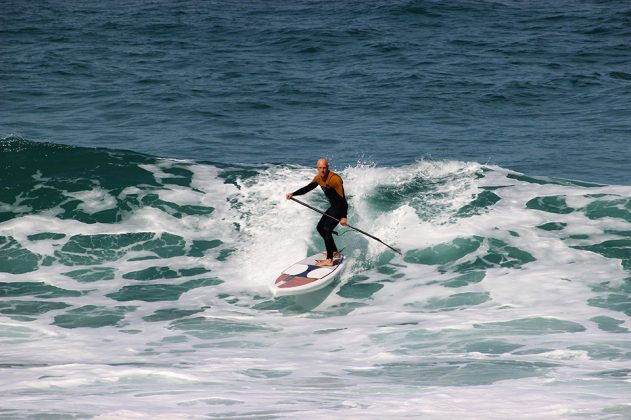PADDLE SCIENCE #8 –
REST & RECOVERY
Words – Kate Starling
Are you tired and weary out on the water? Or aching more than usual after a long paddle session? If you’re struggling to maintain your energy levels during and after your SUP sessions it could be that your body needs a break. If you actually want to perform better at SUP, rest and recovery are critical.
At this time of year, the days are long and light making it the ideal time to jump on your board and hit the water. This often means you’ll spend more time paddling than normal, amounting to an increase in both training frequency and volume.
Recovery from exercise is essential in order to maintain high level performance. Between workouts, the body repairs and strengthens itself, making recovery one of the most essential elements of any exercise or workout routine. Not enough rest can lead to overtraining, fatigue and a significant drop in your performance level.
Why Is Recovery So Important?
Ensuring that you schedule enough recovery time in between your SUP workouts is critical in order to obtain the full effects of training. A hard session on the water will cause physical changes within the body such as the breakdown of muscle tissues, depletion of muscle glycogen and fluid loss. Recovery therefore enables your body to repair any damaged tissues and replenish your energy stores. If your body doesn’t get enough recovery time then your body will continue to breakdown muscles and soft tissues following intensive exercise.
Signs of Not Enough Recovery
Lack of recovery time will result in overtraining. If you feel generally fatigued each time you step on your board, depressed, lethargic, have reduced performance when out on the water or are beginning to pick up injuries or illness then there’s a chance that you may need to up your recovery time and hang your wetsuit up for a few days. A lack of recovery can also negatively impact upon your ability to sleep together with your concentration levels and mood. This is of no benefit at all if you’re aiming for quick reactive skills on your board, be it when surfing, competing or just keeping your balance in windy, choppy conditions.
“If you feel generally fatigued each time you step on your board, depressed, lethargic, have reduced performance when out on the water or are beginning to pick up injuries or illness then there’s a chance that you may need to up your recovery time and hang your wetsuit up for a few days”
Short and Long-Term Recovery
Two types of recovery exist and both are critical for optimal sports performance. The first is short-term or immediate recovery. This is known as the active recovery which occurs immediately in the first few hours after an intense exercise session. Active recovery involves performance of low-intensity exercise. This can be in the cool down phase following a hard interval training or sprint session together with the few days following a SUP session. Low intensity exercise can include a slow gentle paddle before you get out the water or a shorter, easier paddling session in the days following a tough workout.
Whenever you get off the water, you should focus on replenishing your energy stores. It may not be hot and sunny every day over the summer months but you’ll still be sweating every time you paddle in order to regulate your temperature. This fluid loss will be significantly increased if you wear your wetsuit every time you paddle. Make sure that when you’re home and dry you replace any lost fluids and eat a healthy and nutritious meal to restore your glycogen and electrolyte levels. SUP works every major muscle together with smaller muscles in your body. Good nutrition post SUP is important in order to optimise your muscle recovery through protein synthesis ensuring muscles aren’t broken down and muscle strength is boosted.
Short-term recovery also includes getting sufficient sleep, particularly if you’ve been training hard, for example following endurance training or an all-out paddle mission. The effect of sleep on recovery is an interesting area. A couple of nights with reduced sleep won’t hinder your performance too much. However, studies show that a consistent lack of sleep will increase your levels of cortisol, a key stress hormone. It can also reduce the activity of human growth hormone which is active during tissue repair and can decrease the synthesis of glycogen. This means that if you don’t sleep enough you may be more susceptible to poorer tissue repair and repletion of muscle energy stores. Getting into bed at night is the time for soft tissue (muscles, tendons, ligaments) repair and the removal of chemicals that build up as a result of cell activity during exercise.
The second type of recovery is long-term recovery. This form of recovery is scheduled into a long-term training schedule. If you’re training for a race or building up your paddle distance over time, make sure that you factor in rest days within your training programme. If you have a series of races spread throughout the year then chances are you have an annual training programme. Make sure that you alter the level of intensity, distance and time spent on the water so that your body gets sufficient rest. Incorporating other exercises and choosing to modify the type of training you do on your SUP is also important. For example, a high intensity sprint session one day followed by a gentle low-intensity cruise the next with a focus on paddle technique. Incorporating a few sessions of different low impact exercise such as swimming can also be of benefit.
The Principle of Adaptation
The Principle of Adaptation states that when your body is subjected to the stress of physical exercise it will adapt and become more efficient. In other words, when you first start to SUP you’ll often find that standing up and keeping your balance can be difficult, your feet and legs hurt as you try to stay upright and your back and shoulders ache after paddling. However, with a little time on the water, SUP soon begins to feel like second-nature. This means that once your body has adapted to SUP you require an increased level of stress in order to physically challenge yourself and increase your fitness.
Increasing the intensity, duration or frequency of your SUP sessions is therefore important to enable you to obtain greater fitness gains. However, pushing your body too hard is counterproductive. Paddling an immense distance or pushing yourself to paddle out in really choppy or windy conditions can impose too much stress on your body if you’re just not ready for it. Exercise is a balance. If you don’t do much then you’ll notice little improvement in your SUP fitness. Doing too much paddling too quickly can often result in injury particularly if you’ve had a long break from your SUP. To avoid injury, gradually aim to increase the time spent on the water together with the intensity of your paddle sessions and ensure that you build in the odd rest day to enable your body to recover. Aim to be mindful of how your body feels both during and after your SUP sessions and pay attention to any levels of fatigue, aches and pains or low energy. People are often reluctant to take a day off believing that “the harder the better”. Rest and recovery won’t make you weaker or adversely affect your SUP ability. It will make you stronger, fitter and will greatly increase your performance. Let your wetsuit dry out for an extra day – your body will thank you for it. SUP
Kate is a physiotherapist and standup paddler. Reach her at www.newquayphysio.co.uk


